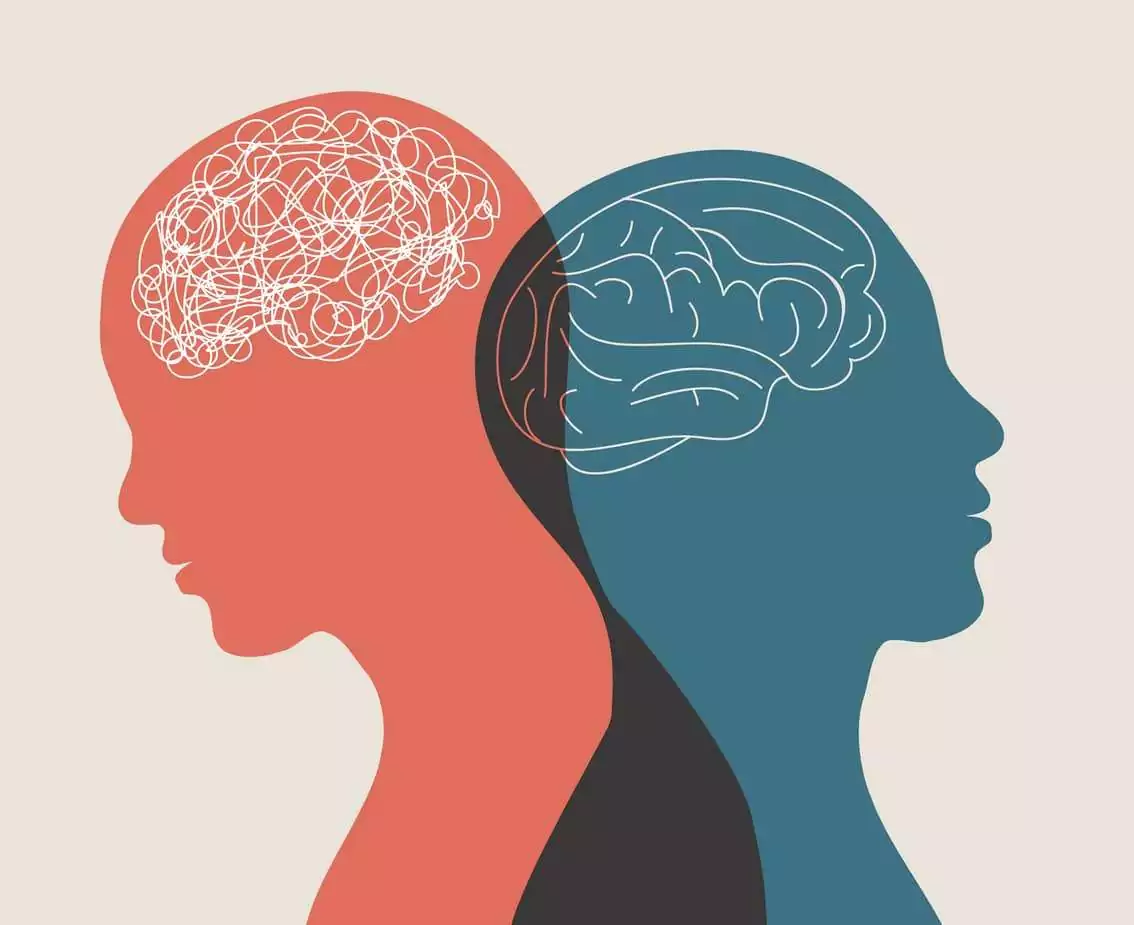Bipolar disorder is a mental health disorder that involves a fluctuation between feeling manic and feeling depressed. These changes can happen for periods of time or include a mixture of opposite feelings at the same time.
The shifts in mood and energy levels associated with this disorder get in the way of the person’s life, causing them to struggle with the symptoms. Early signs of this disorder, which was previously referred to as manic depression, may be present, which can indicate the need to help a person get treatment and manage the symptoms.
Nonetheless, it may not always be easy to distinguish early signs of bipolar disorder from other concerns such as depression or normal teenage mood swings. However, you can lookout for signs of this mental health condition. Early signs may mean early warning signs in children or teens, or it could refer to the first bipolar disorder symptoms you notice related to the onset of the disorder.
Here are early signs of bipolar disorder to look for.
1. Bipolar Disorder Symptoms
If common signs and symptoms of this disorder present themselves, that could be an indication of the onset. Bipolar disorder symptoms include a mixture of manic and depressive symptoms, such as:
- Experiencing a wired and agitated state
- Having an extra amount of energy
- Having difficulty sleeping or sub-par sleep
- Showing too much self-confidence, such as acting as if the person can do anything and is better than others
- Experiencing delusions or hallucinations
- Failing to notice the behaviors
- Feeling hopeless, sad, and down
- Feeling unmotivated and empty
- Being fatigued
- Experiencing suicidal thoughts or actions
- Having changes to sleeping and eating
- Having difficulty being in touch with reality
- Acting impulsively
- Feeling irritable
- Engaging in risky behaviors
- Talking quickly with sudden changes in conversation
- Feeling overly positive
- Being easily distracted
In general, you would notice signs of mania and signs of depression that could happen separately or together. In addition, with bipolar disorder, a person may take an antidepressant for depression symptoms and find it no longer provides relief after a few months or that they experience manic symptoms while taking it. It’s common for people with bipolar disorder to try different types of antidepressants without finding relief.
Symptoms and intensity can vary with the bipolar subtype, so not everyone may present the same signs or go through the same experiences. The main subtypes include:
- Bipolar I: This subtype includes periods of severe mania and then periods of severe depression.
- Bipolar II: This subtype tends to include the periods of mania and depression characterized in bipolar I but with more depression and less severe mania.
2. Signs in Young People
Bipolar disorder tends to show a first major depressive episode before the person reaches age 25, and then the person experiences recurrent major depressive episodes. It’s likely to begin noticing early signs during childhood or teenage years.
Signs of bipolar disorder in children and teens include:
- Having more extreme moods than other people their age
- Experiencing changing moods that impact their behavior
- Seeming overly happy for extended periods of time
- Having relationship problems
- Talking about pain
- Showing symptoms of mania and depression
If you think you might notice early signs of bipolar disorder in teenagers, how can you tell the difference from normal teenage mood shifts? In general, regular teenage mood swings are triggered by something that bothers the teen, such as a parent telling the teenager what to do or having a conflict with a friend.
Bipolar mood shifts don’t tend to have the same noticeable triggering events. You may notice highs and lows that don’t seem to have a cause and last for days or weeks. The teen also may show signs of psychosis, such as delusions and hallucinations. An important early warning sign in teens is not getting enough sleep, which tends to show in a teen who barely sleeps and then carries out regular activities all day without catching up on sleep or someone who has consistently slept poorly for a long time and also experiences extreme emotions.
3. Risk Factors of Bipolar Disorder
Another type of early warning sign of this mental health disorder is that the person has risk factors for developing it. These risk factors do not necessarily mean the person will develop it, but they increase the likelihood and can be taken as early warning signs along with other signs and symptoms. The risk factors associated with this disorder include both genetic and external factors.
Main risk factors include:
- Genetics: A person has more risk of developing bipolar disorder if a family member has it.
- Abuse: Physical or sexual abuse increases the likelihood.
- Substance use: People who use alcohol or addictive drugs, especially cannabis or cocaine, have high levels of co-occurrence with bipolar disorder.
- Stressful events: Particularly stressful events or life changes may trigger the onset of symptoms.
- Seasonal changes: Changes in sunlight may trigger manic or depressive symptoms.
- Head injury
- Preterm birth
How Is Bipolar Disorder Diagnosed?
A qualified medical professional, ideally a mental health professional, can assess you for bipolar disorder and provide a diagnosis if it is warranted. This professional would look for the signs and symptoms of this disorder, including symptoms of mania and of depression.
In addition, the assessment would include ruling out other potential causes of the symptoms and other conditions, such as depression, hormonal changes in teenagers, ADHD, and other conditions.
At BestMind Behavioral Health, we have a team of professionals who can diagnose and treat bipolar disorder in people of varying ages. If you think you’re noticing early signs of bipolar disorder in yourself or your child, contact us to set up an evaluation.


